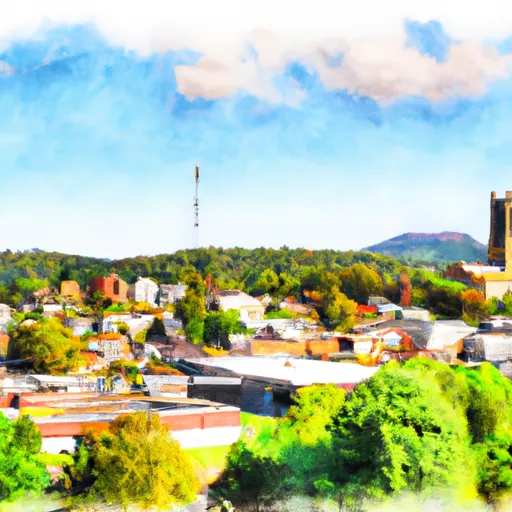-
 Snoflo Premium
Snoflo Premium
Get unlimited access to all our content
With no Ad interruptions! - Start Your Free Trial Login with existing account
Wartburg
Eden Index
Climate
7.6
•
Recreation
3.8
•
Community
1.9
•
Safeguard
4.8/10

Wartburg, Tennessee is a small town located in Morgan County, nestled in the scenic Cumberland Plateau region. The town experiences a humid subtropical climate with hot, humid summers and mild, sometimes chilly winters. Summers bring average temperatures ranging from the high 70s to low 90s Fahrenheit, while winters can see temperatures drop to the mid-20s to 40s.
Wartburg is blessed with abundant water resources. The town is situated near the Obed Wild and Scenic River, offering recreational activities like kayaking, canoeing, and fishing. The river's crystal-clear waters also provide opportunities for swimming and exploring its stunning scenery.
Moreover, Wartburg boasts several nearby natural attractions for outdoor enthusiasts. Frozen Head State Park, just a short drive away, presents hiking trails for all skill levels, including the challenging 14-mile Panther Branch Trail. Outdoor enthusiasts can also enjoy camping, picnicking, and wildlife watching in the park.
In conclusion, Wartburg, Tennessee offers a pleasant climate suitable for various outdoor activities year-round. Its proximity to the Obed River and Frozen Head State Park ensures ample opportunities for nature exploration and recreation.
What is the Eden Index?
The Snoflo Eden Index serves as a comprehensive rating system for regions, evaluating their desirability through a holistic assessment of climate health, outdoor recreation opportunities, and natural disaster risk, acknowledging the profound impact of these factors on livability and well-being.
Climate Health Indicator (CHI): 7.6
Wartburg receives approximately
1426mm of rain per year,
with humidity levels near 84%
and air temperatures averaging around
13°C.
Wartburg has a plant hardyness factor of
6, meaning
plants and agriculture in this region thrive during a short period during spring and early summer. Most
plants will die off during the colder winter months.
By considering the ideal temperature range, reliable water supplies, clean air, and stable seasonal rain or snowpacks, the Climate Health Indicator (CHI) underscores the significance of a healthy climate as the foundation for quality living.
A healthy climate is paramount for ensuring a high quality of life and livability in a region, fostering both physical well-being and environmental harmony. This can be characterized by ideal temperatures, reliable access to water supplies, clean air, and consistent seasonal rain or snowpacks.
Weather Forecast
Streamflow Conditions
Upper Tennessee
Area Rivers
Upper Tennessee
Snowpack Depths
Upper Tennessee
Reservoir Storage Capacity
Upper Tennessee
Groundwater Levels
Recreational Opportunity Index (ROI): 3.8
The Recreational Opportunity Index (ROI) recognizes the value of outdoor recreational options, such as parks, hiking trails, camping sites, and fishing spots, while acknowledging that climate plays a pivotal role in ensuring the comfort and consistency of these experiences.
Access to outdoor recreational opportunities, encompassing activities such as parks, hiking, camping, and fishing, is crucial for overall well-being, and the climate plays a pivotal role in enabling and enhancing these experiences, ensuring that individuals can engage in nature-based activities comfortably and consistently.
Camping Areas
| Campground | Campsites | Reservations | Toilets | Showers | Elevation |
|---|---|---|---|---|---|
| Payne - Allatoona Lake | None | 848 ft | |||
| Victoria - Allatoona Lake | None | 897 ft | |||
| Old Hwy 41 - Allatoona Lake | None | 932 ft | |||
| McKinney - Allatoona Lake | None | 889 ft | |||
| Dobbins Lakeside Military | None | 1,079 ft | |||
| World Famous Lake Military - Atlanta NAS | None | 920 ft | |||
| Clark Creek North - Allatoona Lake | None | 896 ft | |||
| Clark Creek South - Allatoona Lake | None | 858 ft | |||
| Red Top Mountain State Park | None | 927 ft | |||
| Lake Allatoona Military - Fort McPherson | None | 891 ft |
Nearby Ski Areas
Catastrophe Safeguard Index (CSI):
The Catastrophe Safeguard Index (CSI) recognizes that natural disaster risk, encompassing floods, fires, hurricanes, and tornadoes, can drastically affect safety and the overall appeal of an area.
The level of natural disaster risk in a region significantly affects safety and the overall livability, with climate change amplifying these risks by potentially increasing the frequency and intensity of events like floods, fires, hurricanes, and tornadoes, thereby posing substantial challenges to community resilience and well-being.
Community Resilience Indicator (CRI): 1.9
The Community Resilience Indicator (CRI) recognizes that education, healthcare, and socioeconomics are crucial to the well-being of a region. The CRI acknowledges the profound impact of these elements on residents' overall quality of life. By evaluating educational resources, healthcare accessibility, and economic inclusivity, the index captures the essential aspects that contribute to a thriving community, fostering resident satisfaction, equity, and social cohesion.

